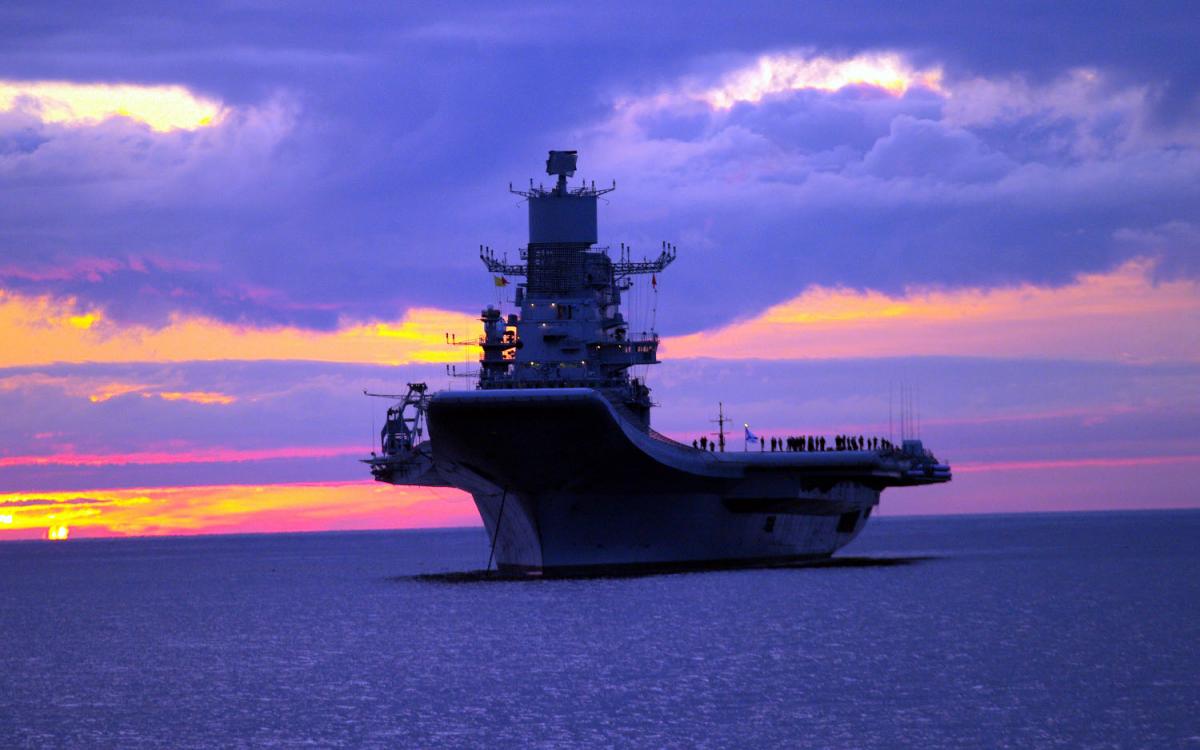Chandigarh: In their quest for atmanirbharta or self-sufficiency in indigenising the country’s materiel requirements, the Ministry of Defence (MoD) and the services appear willing to compromise on the operational efficiency of major locally designed and licence-built platforms.
It seems this proclivity by both entities to commission incomplete platforms was formally legitimised earlier this year, in May, by General Bipin Rawat, India’s first Chief of Defence Staff (CDS) when he recommended domestic sourcing of assorted weapon systems with ‘reduced technical specifications’.
“We should boost ‘Make in India’ by handholding our domestic industry, even if they deliver weapons with only 70% of the general staff qualitative requirements (GSQRs) framed by the armed forces,” General Rawat had somewhat incredulously stated in an interview to the Times of India. “Given the opportunity, they (local manufacturers) will eventually deliver cutting-edge technology,” the newly appointed CDS added in a feeble attempt at recouping his earlier imprudent assertion.
The Indian Navy (IN) is one such service, whose frontline platforms lack essentials like advanced towed array sonars (ATAS) to detect enemy submarines, heavyweight torpedoes to neutralise them and varied air defence systems, all of which are critical not only to their survivability, but also their overall offensive capability.
These enduring deficiencies, unlikely to be resolved soon, acquire significance at a time when the IN is seeking to deter China’s People’s Liberation Army Navy (PLAN) in the Indian Ocean Region (IOR) in an effort at influencing the outcome of India’s continuing seven-month long military standoff in eastern Ladakh.
The navy’s much vaunted INS Vikramaditya (formerly known as the Admiral Gorshkov), its Kiev-class refurbished Russian aircraft carrier lacks an ATAS that is critical for it to identify unfriendly submarines in the warm and relatively shallow waters of the Arabian Sea. Consequently, these undetected submarines can easily ambush the carrier by launching torpedoes against it from standoff ranges of up to 100 km, severely crippling, if not sinking such a valued asset and invalidating its defence or offensive role.
Similarly, a major proportion of the IN’s frontline warships lack ATAS, rendering them equally vulnerable to hostile submarines. Of the six low-frequency ATAS that were eventually imported from Germany’s Atlas Elektronik 2014 onwards, merely two have been installed onto locally designed and built guided missile destroyers; the remaining four are believed to be periodically rotated among platforms at great cost and over extended deadlines. An additional nine ATAS from Atlas have been under acquisition since 2017, but remain delayed due to the MoD’s hidebound and complex procurement procedures.
More recently, the IN on October 22 commissioned INS Kavaratti its fourth and final locally designed and built anti-submarine warfare (ASW)-capable Kamorta-class corvette, but like the previous three warships it too is without an ATAS. Additionally, like the earlier corvettes it is also not armed with an air defence system, which the IN is seeking to import via a global tender issued in 2019 along with some 1,500 missiles – an entire six years after INS Kamorta, the first warship was commissioned in August 2014.

File photo of Indian Navy’s Scorpene submarine INS Kalvari being escorted by tugboats as it arrives at Mazagon Docks Ltd, a naval vessel ship building yard, in Mumbai, India, October 29, 2015. Reuters/Shailesh Andrade/Files
Hence, a majority of IN warships are provided feeble protection from enemy submarines by the comparatively ineffectual locally sourced passive towed array sonars and HUMSA, a Defence Research and Development Organisation (DRDO)-designed hull mounted sonar – both of which senior naval officials privately concede were ‘operationally deficient’. Most IN frontline platforms operate embarrassingly with an empty space at their rear awaiting an ATAS, its officers resigned to operating inadequate warships.
Delay in the procurement of heavyweight torpedoes
In 1995, the MoD had blocked the import of ATAS as the DRDO claimed to be working on developing an indigenous system called ‘Nagan’ that was subsequently scrapped; it was succeeded by the advanced light towed array sonar (ALTAS), which too made no headway. Eventually, to meet critical operational needs the MoD relented, and in 2009 Atlas secured the IN’s first tender for six ATAS, but characteristically that too was deferred for years before it being resurrected five years later in 2012.
“The absence of an ATAS is redolent of a recurring pattern of delayed procurements by the MoD and the services largely due to shortcomings in overall acquisition planning and declining budgets,” a senior IN official told The Wire. Therefore, the navy is left with little choice but to resort to ‘make do options’, or jugaad to make good its equipment shortfall, he added declining to be identified.

The second phase of the Malabar exercise in the Northern Arabian Sea and Indian Ocean with the participation of Indian Navy aircraft carrier INS Vikramaditya and the American aircraft carrier USS Nimitz carry out ‘Malabar-2020’ wargames, in Malabar.
Alongside, two of IN’s six Kalvari-class French Scorpene diesel-electric submarines (SSKs), that are being licence-built by Mazagon Dock Shipbuilders (MDL) in Mumbai and were commissioned into service in late 2017 and in 2019, are operating without the originally planned Black Shark heavyweight torpedoes (HWT).
Two others – INS Vela and INS Karanj – that are presently undergoing sea trials and scheduled for commissioning in 2021 and early the following year, will, in all likelihood, also not be armed with HWTs. This is because the tender to procure 98 of them for all six submarines from Italy’s Whitehead Alenia Sistemi Subacquei (WASS) was scrapped in May 2016, following allegations of corruption involving its then parent company Finmeccanica, following India’s 2010 import of 12 AW101 AgustaWestland helicopters. The replacement of 100-odd torpedoes from either Atlas or France’s Naval Group that are presently under evaluation, following a July 2019 tender, stand delayed due to the COVID-19 pandemic.
IN sources, however, concede that whichever torpedo is eventually acquired, it will necessitate, at considerable expense, extensive engineering changes in all six Scorpene submarines which were originally configured to receive WASS HWTs. In the interim, however, these boats are to be fitted with the older German-origin SUT-series torpedoes that were acquired by the IN in the late 1980s for its four Shishumar-class German HDW Type 209/1500 SSKs. Atlas, once again, is believed to have secured the contract to extend the operational life of 98 SUT torpedoes by 15 years as a stop gap measure or jugaad.
Meanwhile, Kalvari and Khanderi had joined nine Russian Type 877 EKM ‘Kilo’-class variants and four HDW Type 209/1500 boats – all between 19- and 33-years-old – marginally supplementing the IN’s depleted submarine fleet. These numbers, however, were nine boats short of the stipulated 24 submarines that were to have been inducted by 2030, in accordance with the Navy’s 2012-27 maritime capability perspective plan (MCPP).
The Indian Navy versus PLAN
However, with a majority of the older Kilo and HDW boats being decommissioned by 2030, the IN faces serious problems in operating a credible submarine fleet for power projection and realising its strategic goal of sea control and sea denial in the critical IOR, compared to the PLAN’s rapid underwater platform force accretion. The PLAN presently operates a fleet of 66 diesel-electric and nuclear-powered submarines (SSN/SSBNs) and is on course to greatly boost these numbers. The IN, for its part, operates two nuclear-powered submarine, one of which is on a 10-year lease from Russia till 2022.
To make up for this SSK shortfall, the IN is incrementally progressing the over Rs 50,000 crore project 75, India (P-75I) project, delayed by over a decade, to indigenously construct six SSK submarines with air independence propulsion and land-attack capability. The IN and MoD plan on sourcing these boats under the ‘atmanirbhar bharat’ programme from an MoD-designated shipbuilder, who in turn, will be required to form a collaborative venture with a foreign original equipment manufacturer to build the six boats.
In conclusion, the inadequate Vikramaditya and Kalvari had both participated in the recently concluded Malabar exercises in the Arabian Sea and the Bay of Bengal which, other than the IN, also featured the better accoutred Australian, Japanese and US navies.
By all accounts, professional IN personnel gave a capable account of their proficiency within this grouping known as the Quadrilateral or the Quad. Military planners concur they could do even better if supported by wholesome and completed platforms in disregard of General Rawat’s recommendations.
































